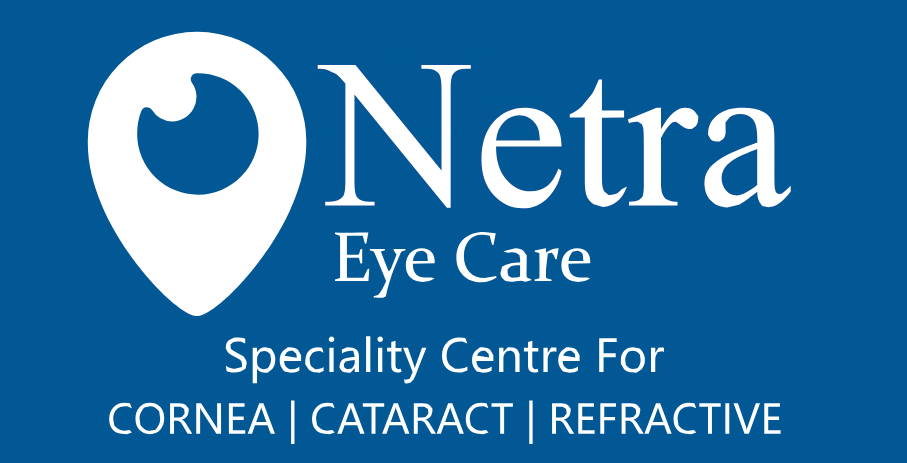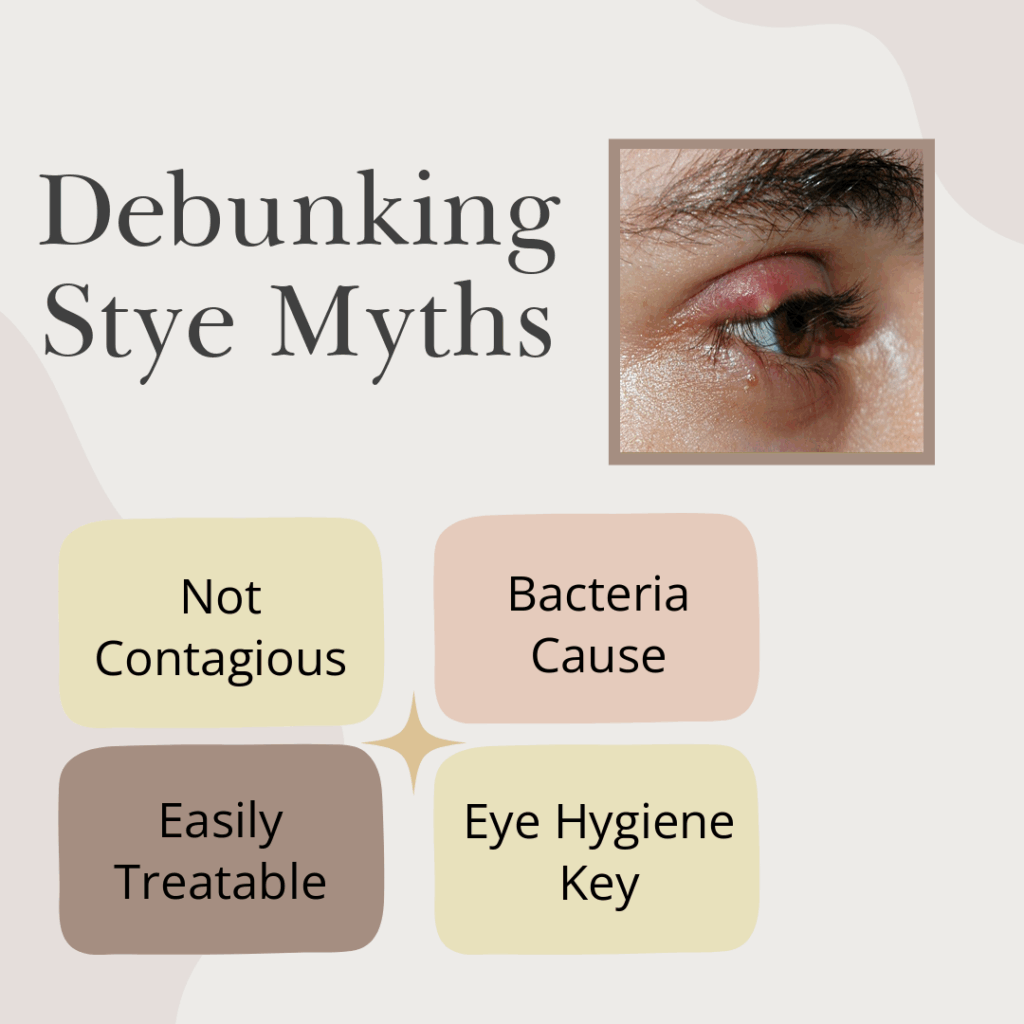Styes are little, painful lumps on the eyelid’s edge. They resemble small pimples caused by bacteria. Dealing with styes can make daily tasks frustrating due to swelling and redness.
A common thought is that styes spread when people share towels or personal items. This idea suggests styes are highly spreadable from one person to another.
This write-up will explore myths about how styes spread and uncover facts. Knowing more about styes helps handle them better and avoid these pesky eye problems.
Knowing if styes really pass from person to person reduces needless worry. It encourages healthier habits without panic, helping manage them smartly.
Understanding Styes: Anatomy and Causes
A stye is an inflamed bump caused by bacteria, often at the base of an eyelash. These bumps appear because of bacteria getting into an eyelash follicle, causing painful swelling. It develops mainly from the Staphylococcus bacteria, naturally living on our skin.
There are two types of styes that can affect our eyes:
1. External Stye: Develops on the outside of the eyelid, visible and touchable.
2. Internal Stye: Forms under the eyelid, may be less obvious but hurts more.
When you have a stye, you’ll notice these symptoms:
- Swelling bump near your eye might hurt a lot.
- Eyelid becomes swollen and causes more discomfort.
- Tenderness in that area can make blinking hard.
- Eye might water due to irritation present in the area. These signs can be painful but usually clear up without much treatment.
Our eye anatomy is crucial for understanding how styes form. Eyelashes and oil glands on eyelids usually get involved in these cases. A blockage or infection here often leads to developing a stye.
Cultural Perceptions and Historical Beliefs
In the past, people often thought styes were very contagious. Styes were linked to bad luck and unhygienic practices by different societies. This belief led to many strange ideas, which lasted over the years.
Various cultures developed unique myths around styes and their causes. It was common to think you could catch a stye just by looking at someone. Others thought a curse or evil eye from another person spread styes further.
While some places hung onto these misconceptions, others knew they were not factual. Today, we know styes are not contagious like how colds spread between people. Understanding shifts mean fewer misunderstandings and judgment among us.
Today, medicine has helped us see styes aren’t caught like common colds. This understanding has replaced old beliefs with science-backed facts on managing styes better.
Myths vs. Facts: Can You Catch a Stye?
You might have heard that you can “catch” a stye. This idea isn’t true at all. Even though styes come from bacteria, just being near someone with one doesn’t spread it.
Styes happen because of bacteria on your skin, not someone else’s. They don’t pass from person to person like a cold does.
Often, people think they got a stye from someone else, but that’s unlikely. It usually comes from using another’s makeup or poor hygiene habits.
Experts say focus on keeping your eyes clean to avoid styes. Regular washing and hands off your face can help prevent them.
Practical Treatments and Home Care for Styes
Several home remedies can help you feel better with a stye:
- Warm Compress: This can reduce swelling and lessen any pain sensed.
- Cleaning the Area: Use gentle baby shampoo to clean your eyelid.
- Avoiding Makeup: Decrease irritation by going without until the stye heals.
To care for styes, remember these do’s and don’ts that help:
- Do wash your hands and keep eyelids clean every day.
- Don’t try to squeeze or pop the stye; it could get worse.
- Do use over-the-counter pain relief tablets if it’s needed.
Although many styes heal on their own, see a doctor if necessary:
- If the stye doesn’t improve in a week, consider medical help instead.
- Consult if you feel extreme pain that won’t subside naturally.
To ease discomfort, ensure cleanliness and guard your eyes carefully:
- Stop rubbing them and ensure eye drops are always uncontaminated.
Environmental and Lifestyle Factors
Pollution affects our health, but can it lead to a stye? Bad air can bother the eyes. This might cause them to get red and sore, which may increase stye chances. When there’s pollution, the eyes meet many bad particles. These might then make it easier for germs to grow. Even if pollution isn’t the only cause of styes, it still makes them more possible.
Different habits can make getting a stye more likely. Examples include:
- Not washing around the eyes often can let germs stay.
- Touching your eyes with dirty hands can spread germs easily.
- Wearing old or unclean lenses can uprise infection odds.
- Leaving makeup on eyes clogs oil glands, causing styes.
Improving these habits may help us have better eye health.
Kids might get affected by pollution more than adults. Their body defenses may not fight eye issues as strongly. Kids may then catch styes more from dirty environments. Teaching them about clean hands and not rubbing eyes matters greatly.
Some behaviors should be stopped to avoid styes:
- Do not share makeup or eye items with other people.
- Always use personal things like towels, never someone else’s.
- Cut down on screen time to keep from rubbing eyes too much.
- Eat well to keep your eyes healthy inside and out.
By knowing and staying away from these actions, styes can be less common.
Parental Guide: Caring for Children Prone to Styes
Keeping your kid clean can help stop styes from showing up.
- Make sure they wash their hands more than twice a day.
- Try teaching them not to touch their eyes without clean hands.
- Fresh towels each time help, so no sharing used ones.
To keep your child’s eyes safer from those pesky styes:
- Eating right with vitamins is key for eye health.
- Your child should get enough sleep each night regularly.
- Always pop on sunglasses when playing under bright sunshine.
Kids prone to styes need often doctor check-ups to help the issue. Warm compresses offer relief if they have a painful stye. Notice any patterns in how often they get styes, noting it down. Stay calm and assure your child fixing this is very doable.
Parents of children with many styes should be hopeful. Simple cleaning habits, good food and doctor visits work well. Talking with their doctor helps you learn more about treatments.
The Emotional and Social Toll of Styes
Having a stye in your eye can feel quite tough. No one likes having something visible on their face. For kids, going to school with a stye might lead to unwanted attention. Adults might also worry about how they look at work or with friends.
When you have a stye, you might feel less sure about yourself. You might want to avoid spending time with others because of how you feel. Remember, many others also experience this, so feeling awkward is normal.
Some people may decide not to go to gatherings because of a stye. When others see it, they may not know what to say or do. Telling them it’s not contagious or dangerous can help them treat it lightly.
It’s crucial to remind someone with a stye that it’s not forever. Chatting with friends about feelings can ease their mind. Seeing a doctor gives advice that reassures and comforts. Offering warmth and kindness makes a big difference and helps them cope better.
Proactive Preventive Measures
Preventing styes involves keeping up with daily hygiene practices. Ensure you clean your eyes gently and avoid touching them often.
Always wash your hands using soap to remove germs quickly. Make sure to keep your towels and pillowcases fresh.
Adopt regular routines of eye cleaning and check for any changes. Listening to advice from an eye care professional can greatly aid your prevention efforts.
Maintain care of personal items like makeup brushes, switching them out often. This practice assists in reducing the chance of bacteria build-up.

